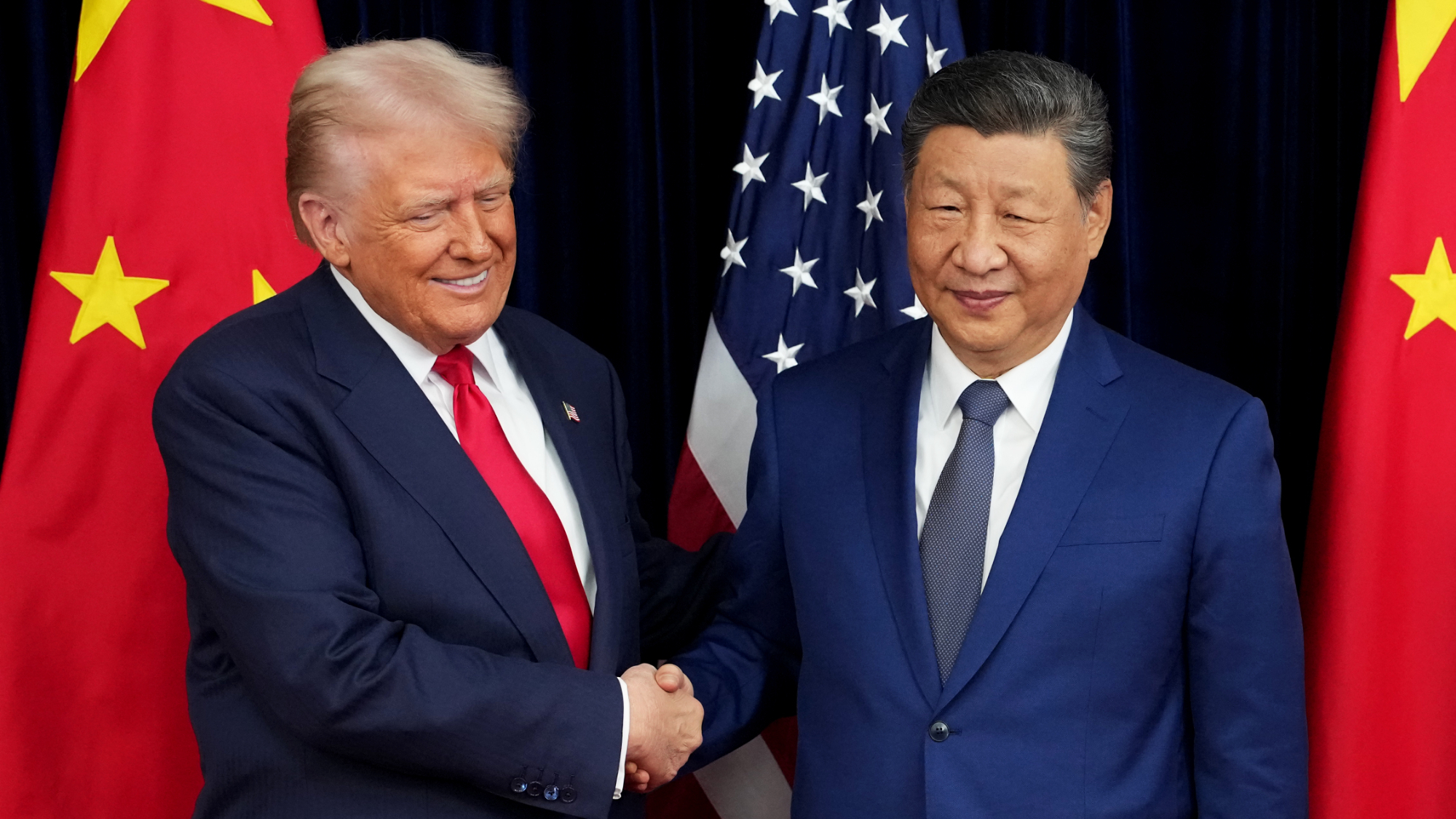U.S. and China agree on one-year tariff truce, including semiconductor and rare earth breakthroughs — future of Nvidia AI chip sales to the nation remains murky

In momentous news for the global trade war and the global semiconductor industry, President Trump and China's Xi Jinping have reportedly agreed on a one-year tariff truce that could pave the way for a lasting easing of tensions between the two nations. As reported by the New York Times, the pair met at an airport in the South Korean city of Busan, which finally brought some clarity and de-escalation to the ongoing trade war between the two superpowers.
According to the report, the two have reached " a series of agreements that broke little new ground but unwound thorny issues that had been plaguing negotiations for a lasting trade deal."
Broader measures include a continued limit to tariffs driven by the "tit-for-tat" escalations, and Trump's agreement to halve a 20 percent import duty placed on China. Crucially for the computing industry, Trump claims that China has agreed "to suspend for a year" new measures designed to crack down on the supply of rare earth metals vital to the manufacturing of hard drives and semiconductors. "All of the rare earth has been settled," Trump announced triumphantly.
One of the biggest flashpoints between the two nations has been artificial intelligence and the proliferation of chips required to power the vast computing needs of inference and training AI models. Specifically, Washington has hamstrung AMD and Nvidia in selling its most powerful chips to China, forcing the companies to create nerfed versions which comply with stringent export laws. Trump confirmed two leaders discussed chips, and according to NYT, "did not rule out the possibility" of letting Nvidia sell AI chips to China. However, Trump was adamant that there was no discussion of Nvidia's potent Blackwell chips, adding, "We're not talking about Blackwell," Bloomberg reports. That's despite claims just from Trump earlier this week that the two would "be speaking about Blackwells" ahead of the meeting.
According to reports, China's own debrief of the summit was decidedly more measured, and crucially did not mention any semiconductor agreements. While the reported settling of the rare earths matter and the breaking of some ground over Nvidia will buoy investors, plenty of issues remain unresolved, and reports that today's agreement marks a truce, rather than a treaty.

Follow Tom's Hardware on Google News, or add us as a preferred source, to get our latest news, analysis, & reviews in your feeds.
Get Tom's Hardware's best news and in-depth reviews, straight to your inbox.

Stephen is Tom's Hardware's News Editor with almost a decade of industry experience covering technology, having worked at TechRadar, iMore, and even Apple over the years. He has covered the world of consumer tech from nearly every angle, including supply chain rumors, patents, and litigation, and more. When he's not at work, he loves reading about history and playing video games.
-
alrighty_then Great news that a deal was struck. If anything prevents war between the US and China over Tiawan it will be shared economic interests.Reply -
bit_user Reply
It just resets things almost back to how they were near the beginning of the year. I don't see any real progress on any of the issues that started this whole tariff and trade sanctions back-and-forth.alrighty_then said:Great news that a deal was struck.
Also, it was almost a foregone conclusion that some sort of climb-down would happen, before the 100% tariffs were meant to hit.
China grows less dependent on the US with every passing year. Also, the US will not go to war over Taiwan.alrighty_then said:If anything prevents war between the US and China over Tiawan it will be shared economic interests. -
SomeoneElse23 Methinks the point of tariffs is leverage for negotiation.Reply
It seems to be working? -
bit_user Reply
In response, China simply created their own points of leverage, such as the restriction on rare earths, tariffs on US agricultural products, and closing their markets to GPUs from the US.SomeoneElse23 said:Methinks the point of tariffs is leverage for negotiation.
It seems to be working?
The fundamental problem here is that the US is more dependent on China than it is on the US. So, it's really hard to find a point of leverage against China that it can't counter and that won't do too much damage to the US (e.g. 100%+ tariffs). The only possible way to do it might've been a coalition of some sort, but that ship has sailed.
Towards that latter point, 70% of the countries in the world are more dependent on trade with China than they are with the US. So, when forced to choose sides, they will tend to side with China. -
shady28 The answer to "Why?" (and this is by no means anywhere near a complete list) :Reply
GE Appliances: Shifting production of refrigerators, gas ranges, and water heaters from China (and Mexico) to expanded plants in Kentucky, Georgia, Alabama, Tennessee, and South Carolina as part of a $3 billion investment. This is expected to create over 1,000 new jobs and began ramping up in mid-2025.
Cra-Z-Art: Expanding US production capacity by 50% for toys and school supplies to offset tariffs on imports from China, with operations scaling up in US facilities starting in spring 2025.
Apple: Committing over $500 billion to expand US manufacturing across states like Arizona, Texas, and North Carolina, including a new Houston factory for servers. This includes shifting some component and assembly work previously done in China, with expansions announced and underway since early 2025.
Fuyao Glass (Chinese company): Relocating glass manufacturing operations to a $1 billion facility in Moraine, Ohio, aiming to employ 3,000 workers. The move, which reduces reliance on Chinese production, was finalized and began operations in 2025.
Tianyuan Garments Co. (Chinese company): Moving clothing manufacturing for brands like Adidas and Armani to a $20 million facility in Little Rock, Arkansas, planning to hire 400 workers. The plant opened in 2025, shifting production previously based in China.
Sun Paper Industry (Chinese company): Establishing a $1 billion bio-products mill for paper manufacturing in South Arkansas, creating 250 jobs. This reshoring effort from China started construction and initial operations in 2025.
Luxshare (Chinese Apple supplier): Shifting electronics and component manufacturing (e.g., for Apple products) outside China, including new investments in US facilities to avoid tariffs. Expansions were announced in early 2025 and are progressing.
Nvidia: For the first time, manufacturing AI chips (Blackwell series) and supercomputers in the US, with over a million square feet of new space in Arizona and Texas. This moves some production previously reliant on Asian suppliers (including China) to domestic sites, starting in 2025. -
bit_user Reply
There will be winners and losers in any policy environment. While tariffs create incentives to on-shore manufacturing, they also hurt existing domestic manufacturers by increasing input costs, which makes their products less viable to export.shady28 said:The answer to "Why?" (and this is by no means anywhere near a complete list) :
The only way to know whether a policy achieved the desired outcome is to look at overall market data, in the years to come. Especially because anything that companies are saying or promising today isn't written in stone. That's even more true, while trade/tariff policy is still in flux.
I will say that I'm glad the administration finally got behind Intel and seems to be focusing on securing domestic supply-chain of semiconductor manufacturing. I care less about whether the mechanism is CHIPS or something else, than I do about self-sufficiency in this area. I expect this will be even more important, in the years to come. However, I think the market data isn't going to tell the whole story, here. This is more about on-shoring vital supply chains, IMO. -
fiyz Reply
My man! Calling it like it is. I hope you and your kin live long and healthy lives, the world needs more people like you.QuarterSwede said:Ah, the sell portion of stock market manipulation. Gross.